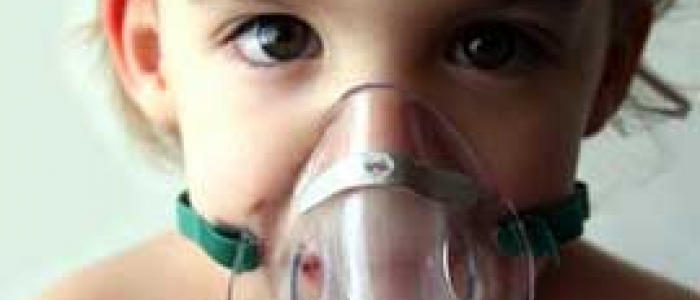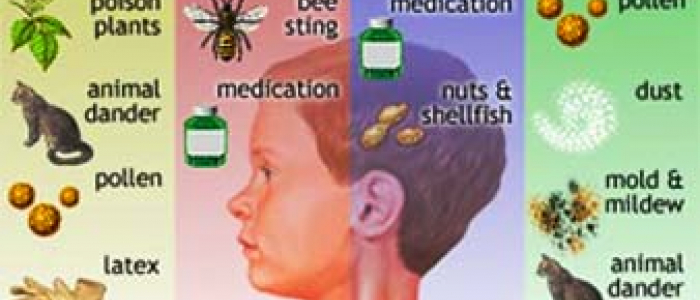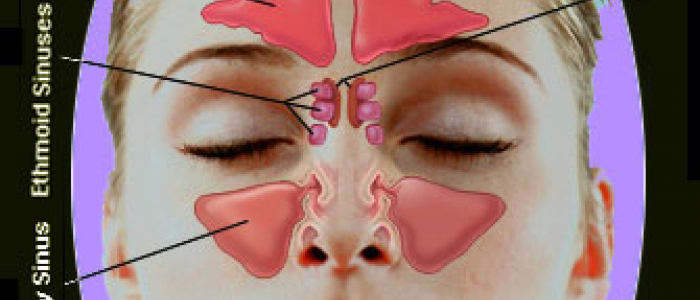
Some allergies are fairly easy to identify because the pattern of symptoms following exposure to certain allergens can be hard to miss. But other allergies are less obvious because they can be similar to other conditions.
If your child has cold-like symptoms lasting longer than a week or two or develops a "cold" at the same time every year, consult your doctor, who will likely ask questions about the symptoms and when they appear. Based on the answers and a physical exam, the doctor might be able to make a diagnosis and prescribe medicines, or may refer you to an allergist for allergy tests and more extensive therapy.
To find the cause of an allergy, allergists usually do skin tests for the most common environmental and food allergens. A skin test can work in one of two ways: A drop of a purified liquid form of the allergen is dropped onto the skin and the area is pricked with a small pricking device.
- A small amount of allergen is injected just under the skin. This test stings a little but isn't extremely painful.
- After about 15 minutes, if a lump surrounded by a reddish area appears (like a mosquito bite) at the injection site, the test is positive.
As an alternative test, blood tests may be used in children with skin conditions, those who are on certain medicines, or those who are extremely sensitive to a particular allergen.
Even if a skin test and/or a blood test shows an allergy, a child must also have symptoms to be diagnosed with an allergy. For example, a toddler who has a positive test for dust mites and sneezes a lot while playing on the floor would be considered allergic to dust mites.
Treating Allergies
The only real way to cope with them is to reduce or eliminate exposure to allergens. That means that parents must educate their kids early and often, not only about the allergy itself, but also about the reactions they can have if they consume or come into contact with the allergen.
Informing any and all caregivers (childcare personnel, teachers, extended family members, parents of your child's friends, etc.) about your child's allergy is also important.
If reducing exposure to environmental allergens isn't possible or is ineffective, medicines may be prescribed, including antihistamines (which you can also buy over the counter), eye drops, and nasal sprays.
In some cases, an allergist may recommend immunotherapy (allergy shots) to help desensitize someone with an allergy. However, allergy shots are only helpful for allergens such as dust, mold, pollens, animals, and insect stings. They're not used for food allergies.
Here are some things that can help kids avoid airborne allergens:
- Keep family pets out of certain rooms, like your child's bedroom.
- Remove carpets or rugs from your child's room (hard floor surfaces don't collect dust as much as carpets do).
- Don't hang heavy drapes and get rid of other items that allow dust to build up.
- Clean when your child is not in the room.
- Use special covers to seal pillows and mattresses if your child is allergic to dust mites.
- For kids allergic to pollen, keep the windows closed when the pollen season is at its peak, change their clothing and bathe them after they've been outdoors, and don't let them mow the lawn.
- Keep kids who are allergic to mold away from damp areas, such as some basements, and keep bathrooms and other mold-prone areas clean and dry.
Kids with food allergies need to completely avoid products made with their allergens. This can be tough as allergens can be found in many unexpected foods and products.
Always read labels to see if a packaged food contains your child's allergen. Manufacturers of foods sold in the United States must state in understandable language whether foods contain any of the top eight most common allergens. This label requirement makes things a little easier. But it's important to remember that "safe" foods could become unsafe if food companies change ingredients, processes, or production locations.
Cross-contamination means that the allergen is not one of the ingredients in a product, but might have contaminated it during production or packaging. Companies are not required to label for cross-contamination risk, though some voluntarily do so. You may see advisory statements such as "May contain...," "Processed in a facility that also processes...," or "Manufactured on equipment also used for ...."
Since products without precautionary statements also might be cross-contaminated and the company simply chose not to label for it, it is always best to contact the company to see if the product could contain your child's allergen. You might find this information on the company's website, or you can contact a company representative via email.
Cross-contamination also can happen at home or in restaurants when kitchen surfaces or utensils are used for different foods.










